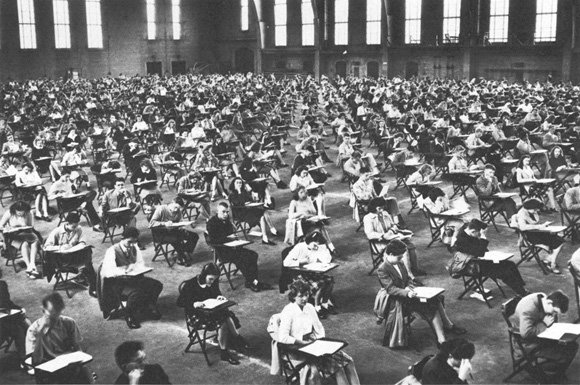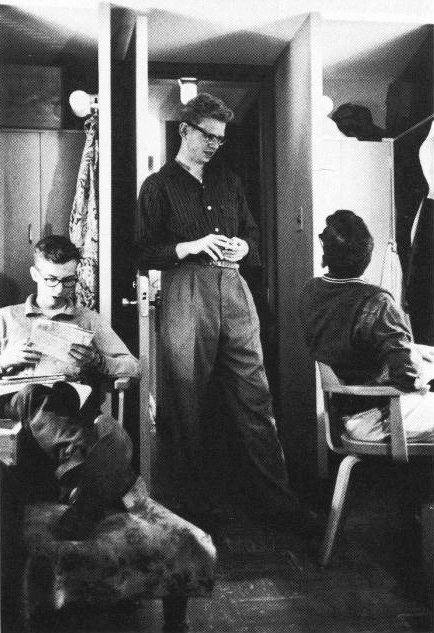The College Reshaped
In 1954, with the encouragement
of Chancellor Lawrence A. Kimpton, the University Senate reorganized
the College to eliminate the Hutchins AB degree and relocate the bachelor's
degree to its conventional position at the end of four years of collegiate
studies. In 1958, the University adopted a College plan incorporating
two years of general education courses for all students to be followed
by two years of specialized work.
These efforts to revive the College found fuller expression in 1965 under the leadership of Edward H. Levi, Provost, Acting Dean of the College, and (after 1968) President of the University. As proposed by Levi, the College was reorganized into four Collegiate Divisions corresponding to the four graduate divisions and an unaffiliated fifth division, known as the New Collegiate Division, which would encourage interdisciplinary work.
General education courses were rearranged into an entering "common year" and a second year that could be taken later in the student's program, a sequence which was to become the basis for the College's revised "Common Core."
The Levi plan offered students an opportunity to acquire an integrated general education while permitting disciplinary specialization as well. New offerings in nontraditional fields and non-Western cultures enriched the College curriculum and broadened the alternatives for individual students. When the last of the comprehensive examinations was phased out, the College severed a structural link to the Hutchins tradition, but in its divisional structure and common core it remained profoundly indebted to his academic leadership.
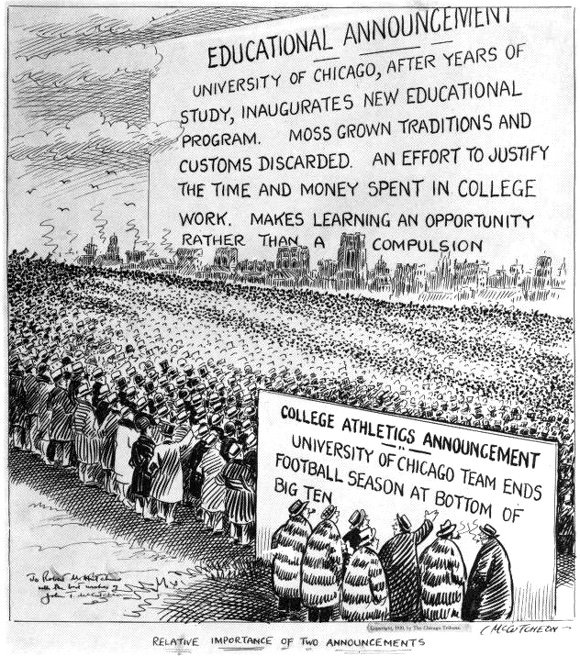
The adoption of the New Plan in the 1930s helped the University counter some of the bad publicity brought by its faltering football program. ©Copyrighted 1930, Chicago Tribune Company, all rights reserved, used with permission.
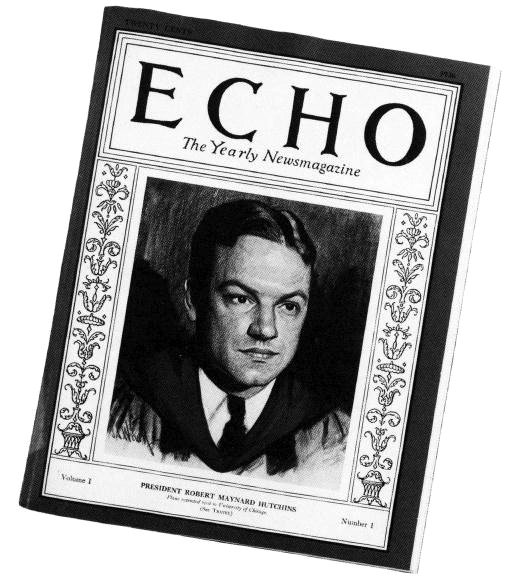
President Hutchins was featured in the "travel" section of the first issue of Echo, an annual student review patterned on Time magazine and published with the Cap and Gown. While Echo praised Hutchins for his educational innovations and executive leadership, it noted that "students look forward to graduation as a means of meeting the president."
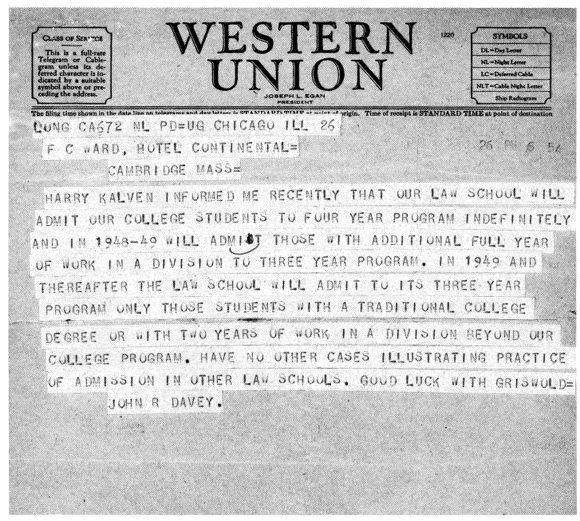
Despite the academic success of College students, graduate and professional schools, including the University's own, were reluctant to accept Chicago students on the basis of a two-year AB. Harry Kalven, professor of law, informed Dean of Students John R. Davey that the Law School would soon accept only those students with traditional college degrees.
These efforts to revive the
College found fuller expression in 1965 under the leadership of Edward
H. Levi, Provost, Acting Dean of the College, and (after 1968) President
of the University. As proposed by Levi, the College was reorganized
into four Collegiate Divisions corresponding to the four graduate divisions
and an unaffiliated fifth division, known as the New Collegiate Division,
which would encourage interdisciplinary work.
General education courses were rearranged into an entering "common year" and a second year that could be taken later in the student's program, a sequence which was to become the basis for the College's revised "Common Core."
The Levi plan offered students an opportunity to acquire an integrated general education while permitting disciplinary specialization as well. New offerings in nontraditional fields and non-Western cultures enriched the College curriculum and broadened the alternatives for individual students. When the last of the comprehensive examinations was phased out, the College severed a structural link to the Hutchins tradition, but in its divisional structure and common core it remained profoundly indebted to his academic leadership.

The Kimpton administration's undergraduate program retained an emphasis on general education for the first two years and added a year apiece for specialized study and electives. Although those with high school diplomas were preferred, qualified high school students were still eligible for admission to the College.
